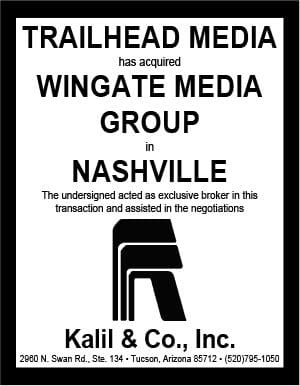
By Adam Malone, C0-Founder and President of Screenverse
One week ago OneScreen AI announced its $1.2 million seed round to fix a “broken” OOH industry and become, as the Business Insider headline read, the “Amazon of OOH”.
The news of Lamar’s $30 million investment in Vistar Media is proof that OOH isn’t broken, and that OOH already has its Amazon.
Let’s explore how Lamar compares to Amazon in a few key areas:
Resilience:
Both companies have faced their headwinds over the decades. Lamar, founded in 1902, has survived 2 World Wars, 2 Global Pandemics, a Great Depression, a dozen recessions, stifling political regulations, and the rise of digital media.
Amazon, founded in 1994, endured the dot-com bust of 2000-2001, the financial collapse of 2007-2008, competition with Walmart and other retail behemoths, and the Coronavirus Pandemic.
Amazon proved to be one of the companies that most benefited from the Coronavirus pandemic. Lamar also enjoyed relative success in an otherwise dismal year for OOH.
According to Statista, Lamar’s market share position vs the US OOH industry grew from 20% in 2019 ($1.75B, vs $9B) to 26% in 2020 ($1.57B, $6B).
Since March 16th, 2020 Amazon (AMZN) stock is up ~105%. Lamar’s (LAMR) is up ~60%.
Resilience!
Turning Cost-centers into Profit-centers:
Amazon has written “the book” on how to turn cost-centers into profit centers.
Shipping and Fulfillment – Before launching “Fulfilled by Amazon” (FBA) in 2006, Amazon, its 3rd party merchants, and its customers were paying USPS, UPS, and FedEx billions of dollars a year to warehouse and ship products bought on Amazon. Now, FBA is a profit center for Amazon, and it is cheaper, faster, and better for merchants and customers.
Web-Services – Amazon started building its “compute” business in the early 2000s to create a scalable retail computing infrastructure. This internal cost-saving project evolved into a business and in 2010, Amazon Web Services (AWS), made $1.5B in revenue. It is now the leader in Cloud Computing, enjoying 32% global market share, and $13.5B in profits in 2020!
Lamar is taking a page from “the book” with its investment in Vistar Media.
Programmatic Platform Fees – Lamar has worked with Vistar for 8+ years and as the viability of the channel has grown, so have the costs. Even at relatively low fees, Lamar has likely been paying 7-figure annual commissions to Vistar and that was only going to increase with more volume. What better way to save “tolls” for a bridge than to buy the whole thing? Now Lamar can sell through the Vistar SSP as much as it wants while collecting a portion of all the tolls its competitors pay to ride the same roads!
It’s FBA for OOH!
Technology, Ops, and Data – Although Lamar in many ways looks like the embodiment of “traditional” OOH media, it has quietly been a pioneer in systems development; namely a comprehensive inventory management (IM) system and API. Vistar rose to prominence on its technical prowess and clever investments in datasets and a DMP that powers much of the planning and buying decisions in its DSP. With Lamar’s investment in Vistar, the two companies could build a cohesive platform for end-to-end OOH media management and sales.
AWS for OOH?
Investing in a Digital Future:
Amazon represented 47% of ecommerce retail spend in 2020 and has exceeded 51% so far in 2021. This growth has catapulted Amazon to a worldwide market share to 10% of all Retail revenue.
Long before Lamar’s investment in Vistar, it had been digitizing its inventory and investing in its systems to prepare for a digital future. Lamar now has 3,600 digital billboards in its fleet and has invested in the human capital and industry associations to spearhead the industry’s charge into emerging technology, data, and programmatic selling.
Lamar is proving that OOH is not broken and, by investing in Vistar Media and doubling down on digital, is poised to lead OOH’s breakout for decades to come.
Adam Malone is an entrepreneur and business builder in the OOH industry. He is Co-Founder and President of Screenverse, a leading Digital OOH media management and monetization company. Before Screenverse, he spent ten years building OOH marketplace – DOmedia. He can be reached for comment at adam@screenversemedia.com.
[wpforms id=”9787″]
Paid Advertisement


















Well said, Adam. I enjoyed this article. The comparisons to Amazon are indeed interesting.